How Pricing Prices Sales Orders
Oracle Pricing uses pricing entities, such as price lists and discount lists, to calculate the price of an item and the sales order total.
Assume you integrate Oracle Pricing with Oracle Order Management, and Pricing must determine charges for the AS54888 Desktop Computer item:
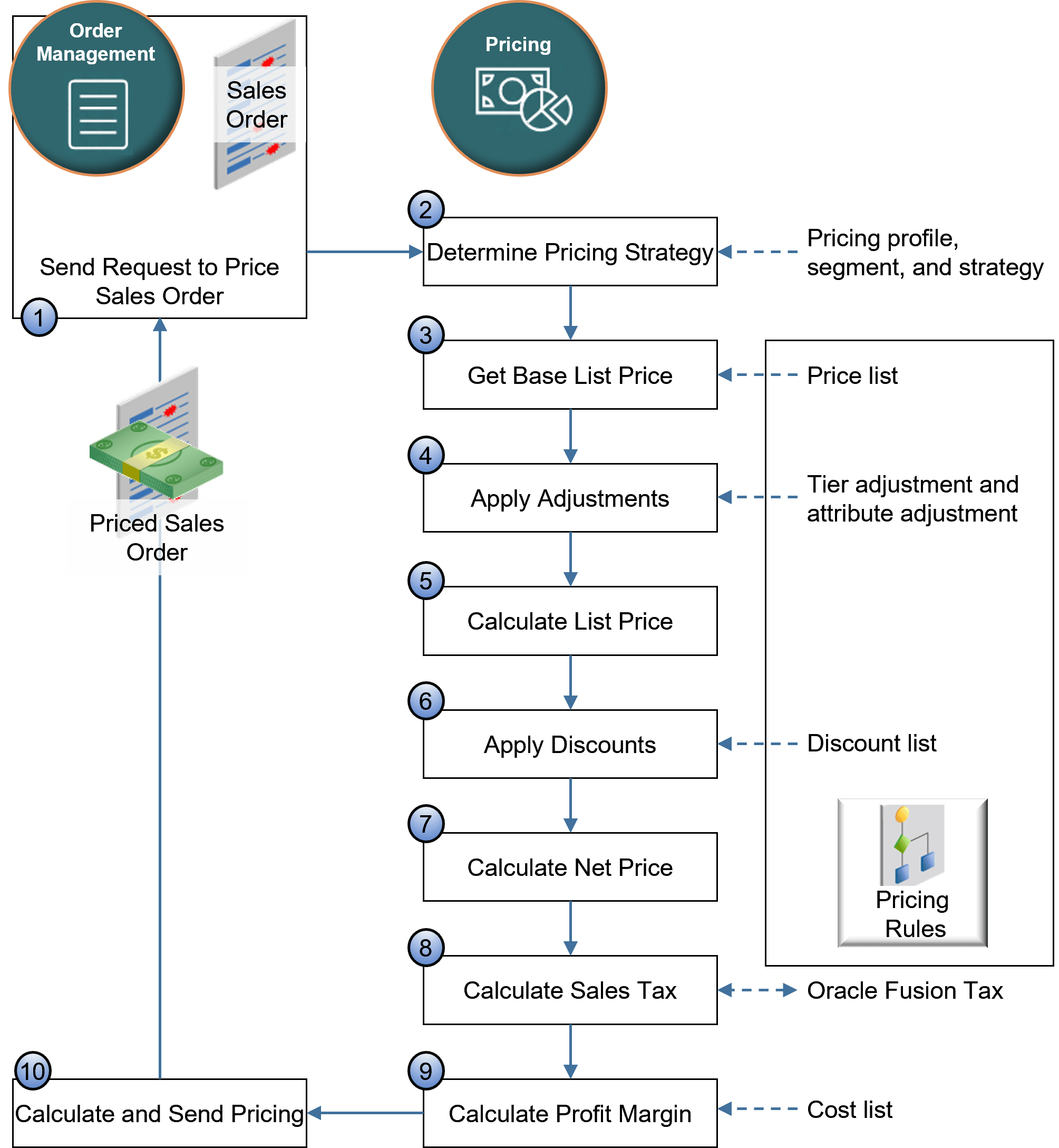
Here's how it works.
-
You add an order line in Order Management. Order Management sends a request to Pricing to price the sales order, including attribute details that affect pricing:
Attribute
Value
Customer
Computer Service and Rentals
Business Unit
Vision Operations
Item
AS54888
Unit of Measure
Each
Line Type
Buy
Quantity
2
-
Use pricing profiles, pricing segments, and pricing strategies to identify the pricing strategy to use for this item.
For details, see How Profiles, Segments, and Strategies Work Together.
-
Use a price list that the pricing strategy references to get the base list price for the item.
A price list sets the price for each item you sell. For details, see Manage Price Lists.
You set up rules that Pricing uses to calculate charges. You set them up on the price list, adjustments, discount list, cost list, and so on.
-
Reference a tier adjustment or an attribute adjustment, then apply it to the item.
You can specify tier pricing or a pricing matrix to adjust the price that a pricing rule calculates.
For details, see Adjust Price for Pricing Rules.
-
Calculate list price.
-
Reference a discount list that applies a discount on the base list price so it can determine net price.
For example, apply a 10% percent discount on the list price.
You can set up a discount list that applies a flat rate discount, a percent discount, or uses a pricing matrix to define a discount according to an attribute of the item. For details, see Manage Discount Lists.
-
Calculate net price and return the charge and charge components.
-
Call Oracle Tax to calculate sales tax for the item.
Pricing uses the tax details that Oracle Tax returns to create charge components for taxes. For details, see Configure Tax Calculation and Accounting.
-
Calculate profit margin according to costs that the cost lists define.
You can create a cost list that references a variety of charges, such as item cost, sales commission, or labor cost. For details, see Manage Cost Lists and Cost Plus Pricing.
-
Calculate sales order totals, then communicate the results to Order Management.
Pricing sends price details to Order Management:
|
Pricing |
Value |
|---|---|
|
Base List Price |
$1,000. From the Corporate price list. |
|
Tier Adjustment |
Minus $200. |
|
List Price |
$800. |
|
10% Discount |
Minus $100. |
|
Net Price |
$700. |
|
Extended Amount |
$1400. |
Note
-
Depending on your setup, Order Management sends a request to Pricing every time you do something on the sales order that affects price, such as:
-
Set the Customer attribute on the order header.
-
Add an item to the order line.
-
Change the quantity or unit of measure.
-
Click the pencil in the Your Price column of the order line to manually adjust the price.
-
Set the Shipping Method attribute on the Shipment Details tab, or set other shipping attributes that affect shipping cost, such as Ship Lines Together.
-
Click Actions > Reprice Order.
-
Click Submit.
-
-
Pricing repeats the entire process to recalculate the sales order every time it receives a request from Order Management, including pricing for each order line and the sales order total.
-
An item can include one or more charges, and Pricing returns each of these values as a charge. For example, it returns the value of the unit price as the Sale Price Charge.
-
Order Management updates the price breakdowns and other attributes that display price, such as Amount on the order line and Total on the order header.
-
Pricing comes predefined to perform most of this process without requiring you to modify pricing logic.
-
This topic describes a simplification of the predefined Price Sales Transaction pricing algorithm, which is the primary algorithm that Pricing uses to price an item. You can modify this algorithm. Pricing uses different algorithms to calculate different prices. For example, it uses the Calculate Sales Order Totals pricing algorithm to calculate sales order total.
-
This example doesn't include details about taxes or profit margins that the pricing algorithm calculates.
-
Most Oracle Applications use User Preferred Time Zone when they perform a calculation that includes a date value. However, Pricing uses the server time zone. This might affect the value for some price calculations. For example, calculations that include Start Date and End Date.
For details, see How Service Mappings, Pricing Algorithms, and Matrixes Work Together.
Get technical details:
-
See the Pricing chapter in Tables and Views for Oracle Fusion Cloud SCM.
A More Detailed Example
Let's use a different example to take a closer look at pricing.
Each sales order includes pricing details:
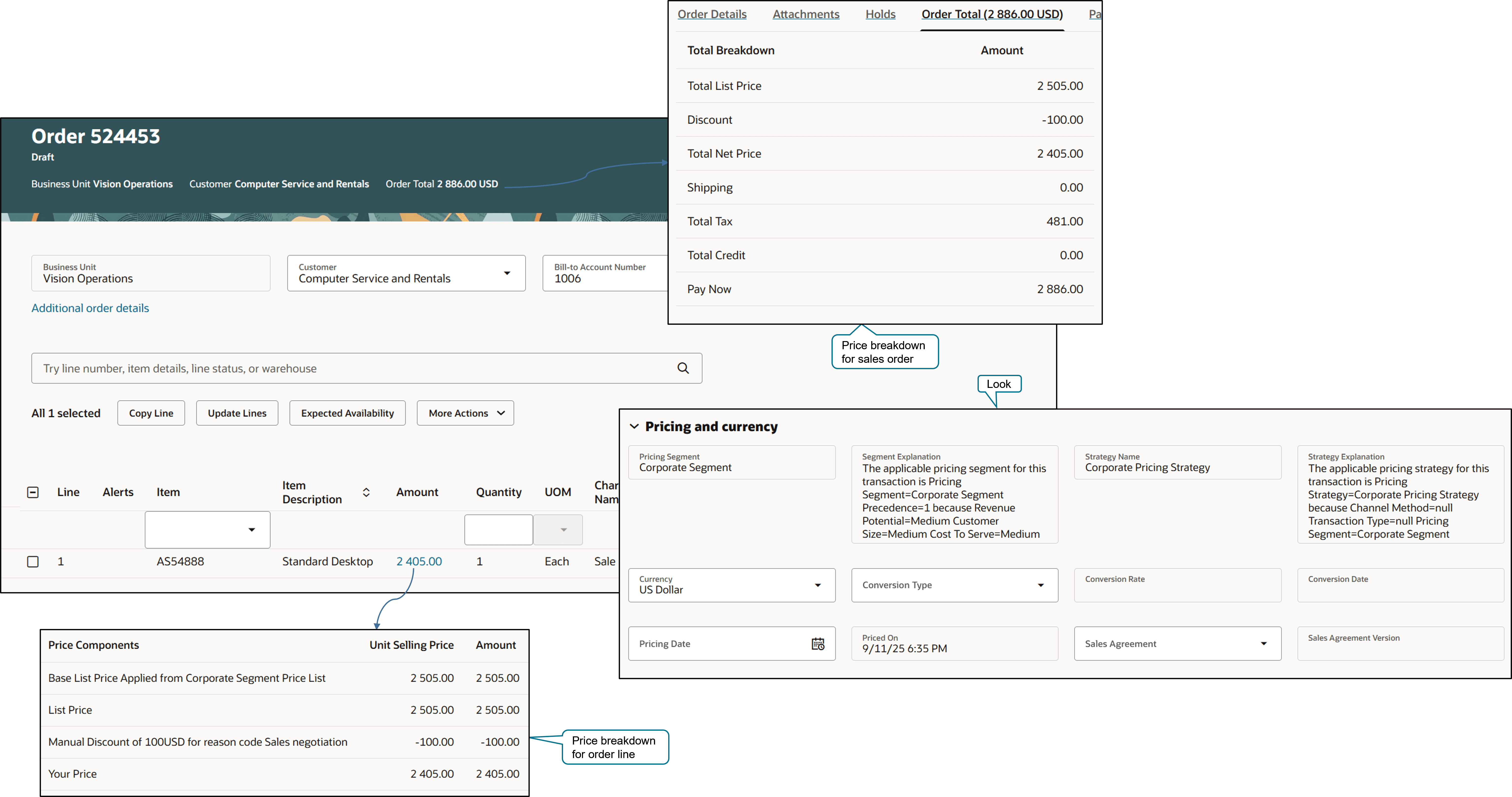
Note
-
Click Additional order details to examine details about the pricing strategy and pricing segment that Pricing applies to the sales order.
-
Click the price total at the top of the sales order to view the price breakdown for the entire sales order.
-
Click the amount on the order line to view the price breakdown for the order line.
How does it work? Try it:
-
Create a sales order in Order Management but don't set the customer.
-
Click Additional order details.
Order Management calls Pricing to get the strategy and segment, but the call doesn't include the customer:
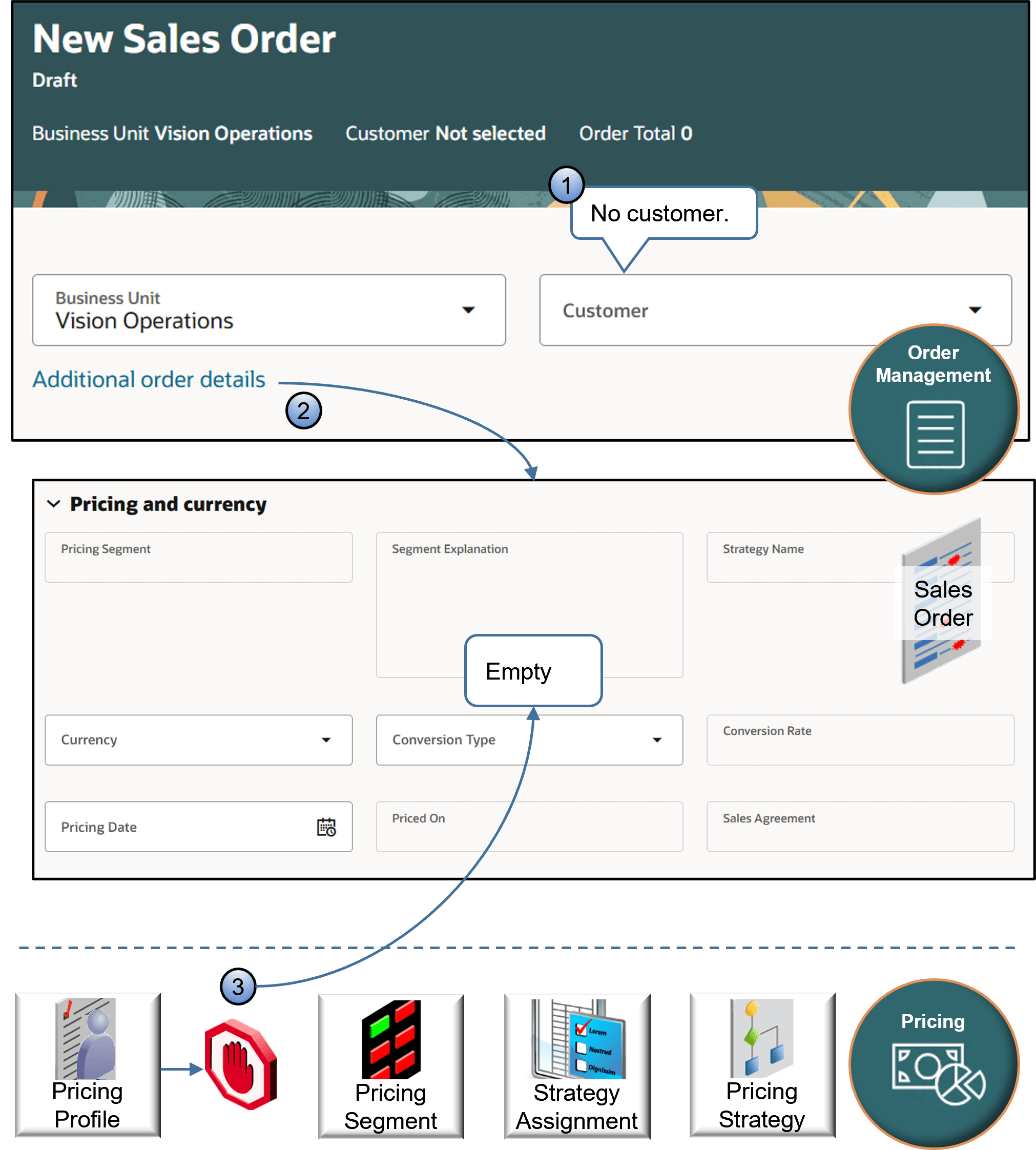
-
Pricing can't populate the profile without the customer, so its blocked from proceeding to determine the segment, assign the strategy, and apply the strategy. It returns nothing or it might return null in the strategy explanation.
The applicable pricing strategy for the transaction is Pricing Strategy = Corporate Pricing Strategy, Precedence = 100 because Pricing Segment = null.Pricing sets the strategy to Corporate Pricing Strategy when it doesn't have enough detail, by default.
Also, Pricing can't populate the currency because the strategy sets currency.
Now, try this:
-
Add a customer.
-
Click Additional order details.
-
This time, Pricing can populate the profile because it has the customer, it proceeds to determine the segment, assign the strategy, and apply the strategy.
Pricing sends the results, and Order Management populates the dialog with strategy and segment details, and sets the currency:
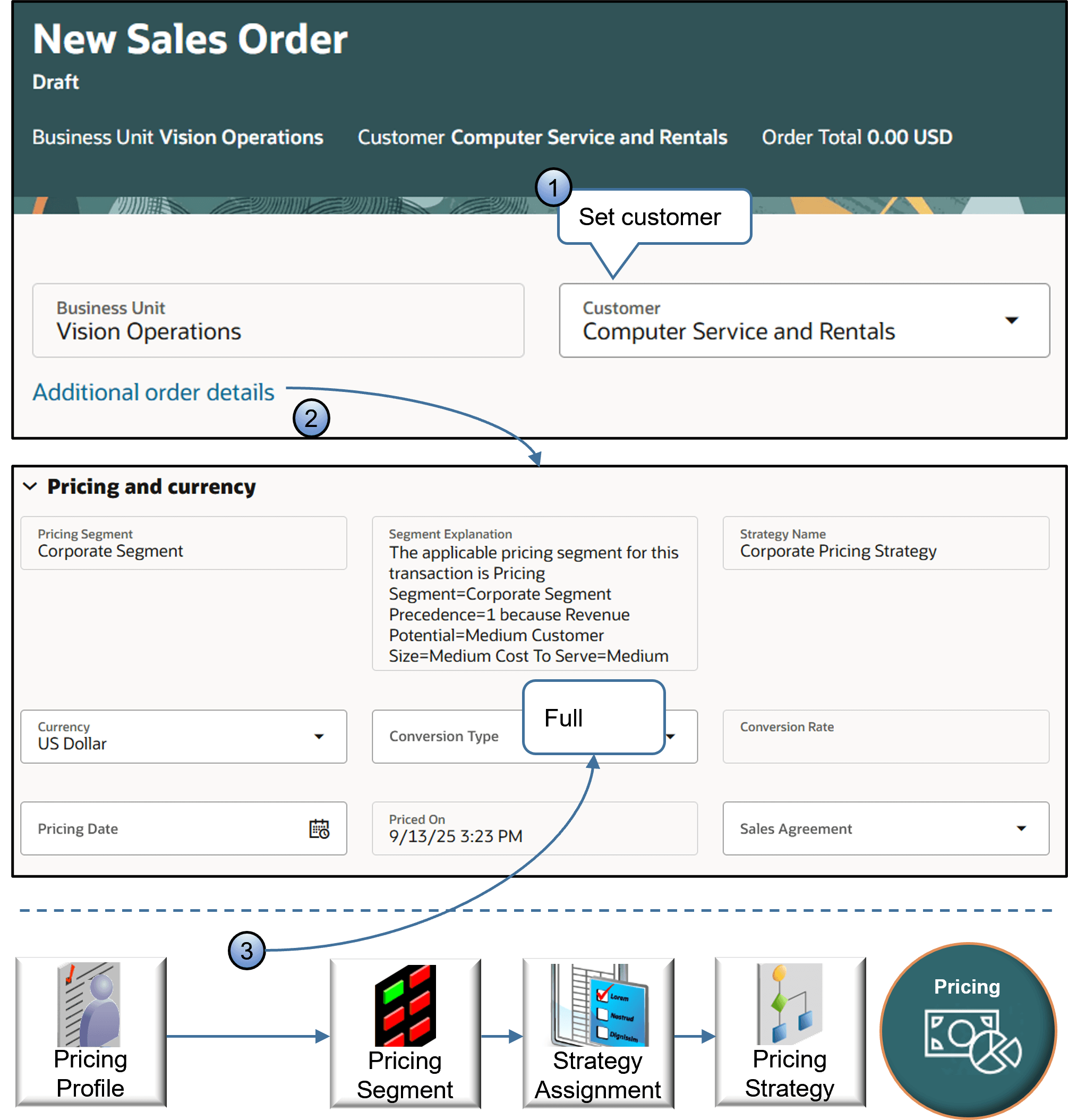
For example, it sets the segment to Corporate Segment and provides an explanation:
The applicable pricing segment for this transaction is Pricing Segment=Corporate
Segment Precedence=1 because Revenue Potential=Medium Customer Size=Medium Cost To
Serve=Medium Customer Value=Medium Customer Rating=Medium
It sets the strategy to Corporate Pricing Strategy and provides an explanation.
The applicable pricing strategy for this transaction is Pricing
Strategy=Corporate Pricing Strategy because Channel Method=null Transaction Type=null
Pricing Segment=Corporate Segment
Next, notice the totals are zero because you haven't added an order line:
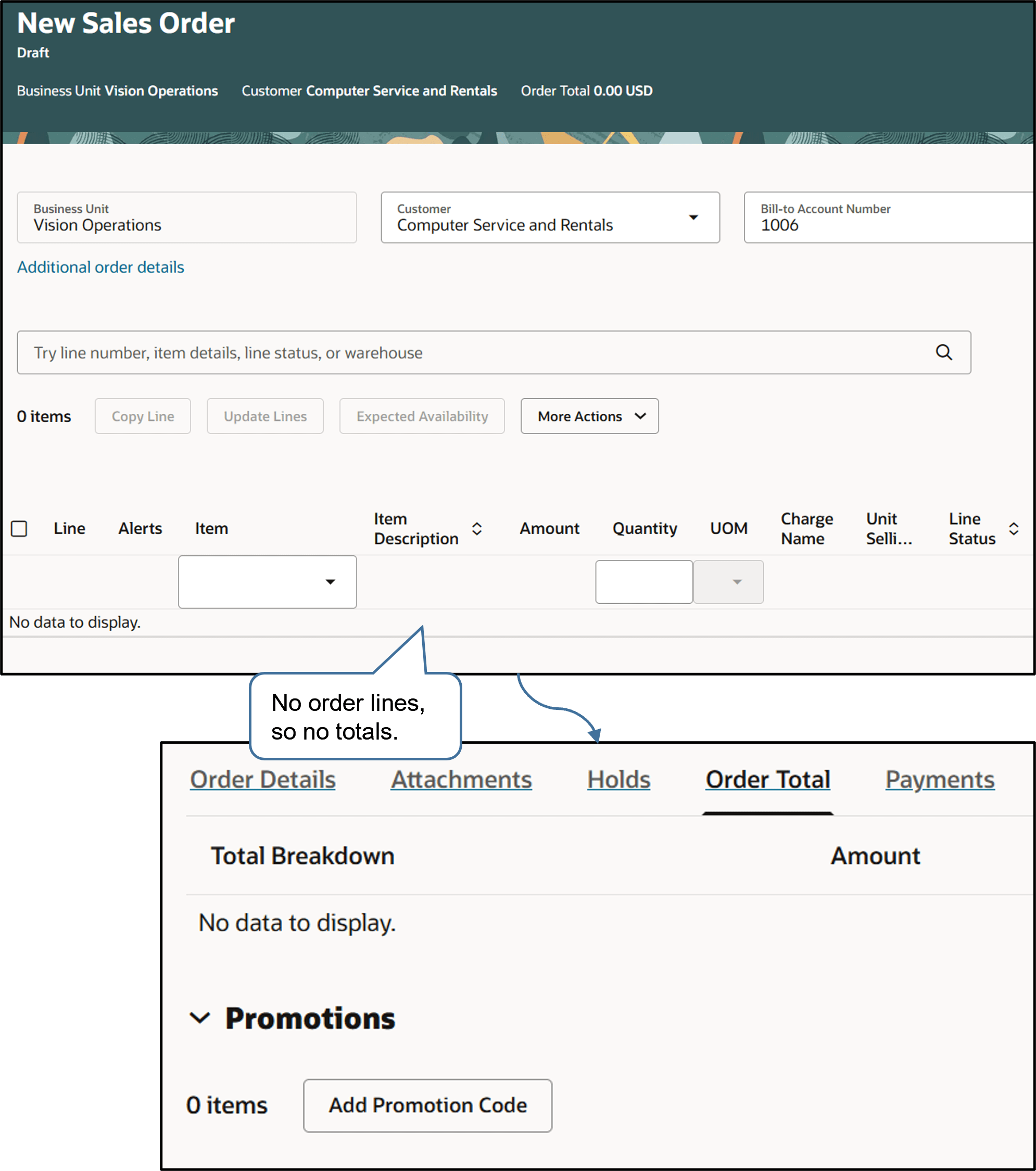
Assume you set up a price list named Corporate Segment Price List, added the AS54888 to it with a base list price of 2505, and added the price list to the Corporate Pricing Strategy.
You add an order line for the AS54888 item with a quantity of 2:
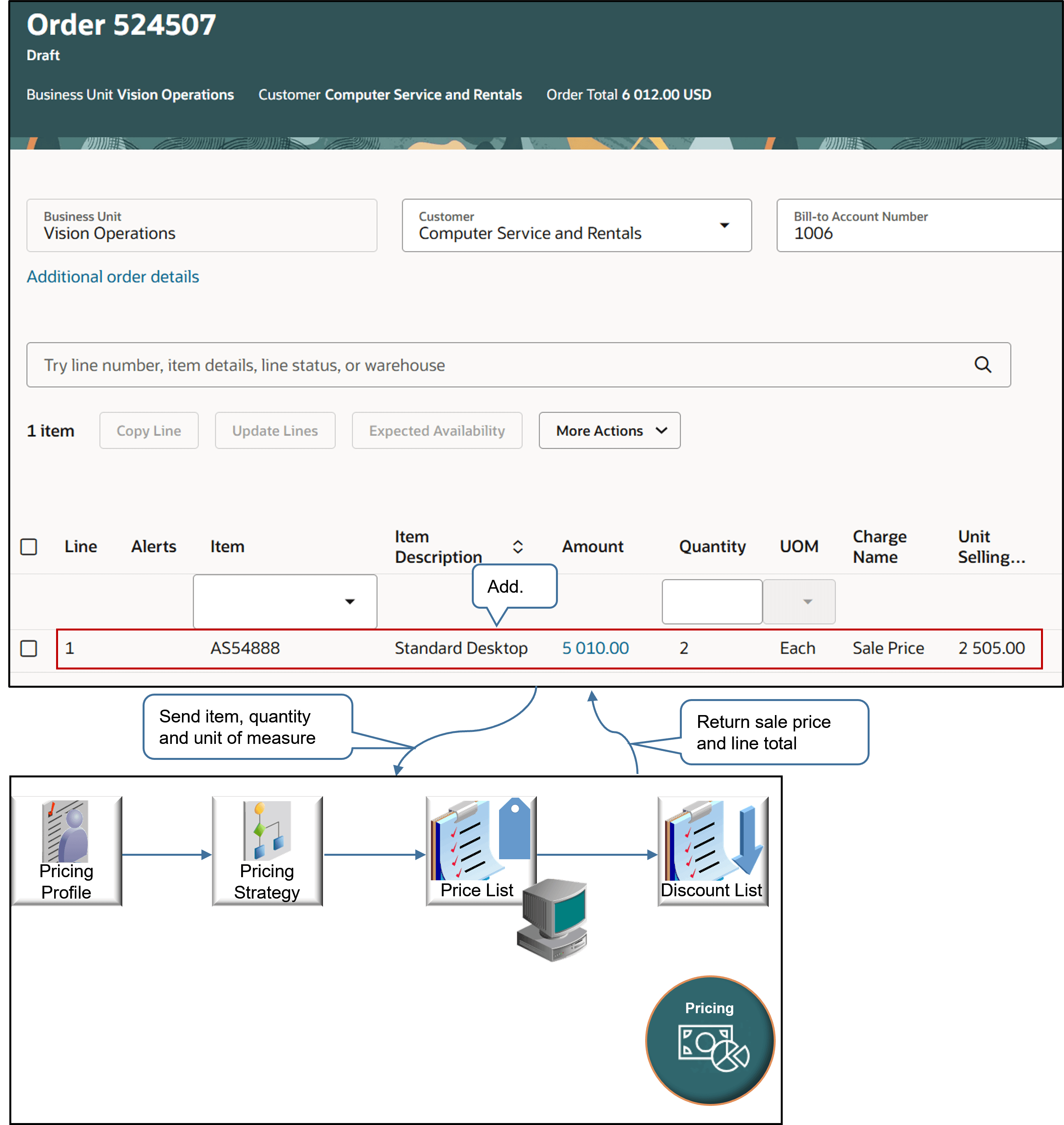
Order Management sends the item, quantity, and unit of measure to Pricing with a request to price the item.
Pricing determines the strategy, uses the price list to determine the price, the discount list to determine the discount, prices the item, then returns the sale price charge and the order line total.
Next, click the 4,800 total on the order line, then manually apply a $100 discount. You added a quantity of 2, so the Amount dialog includes unit price and amount column. The dialog identifies the price list that Pricing used:
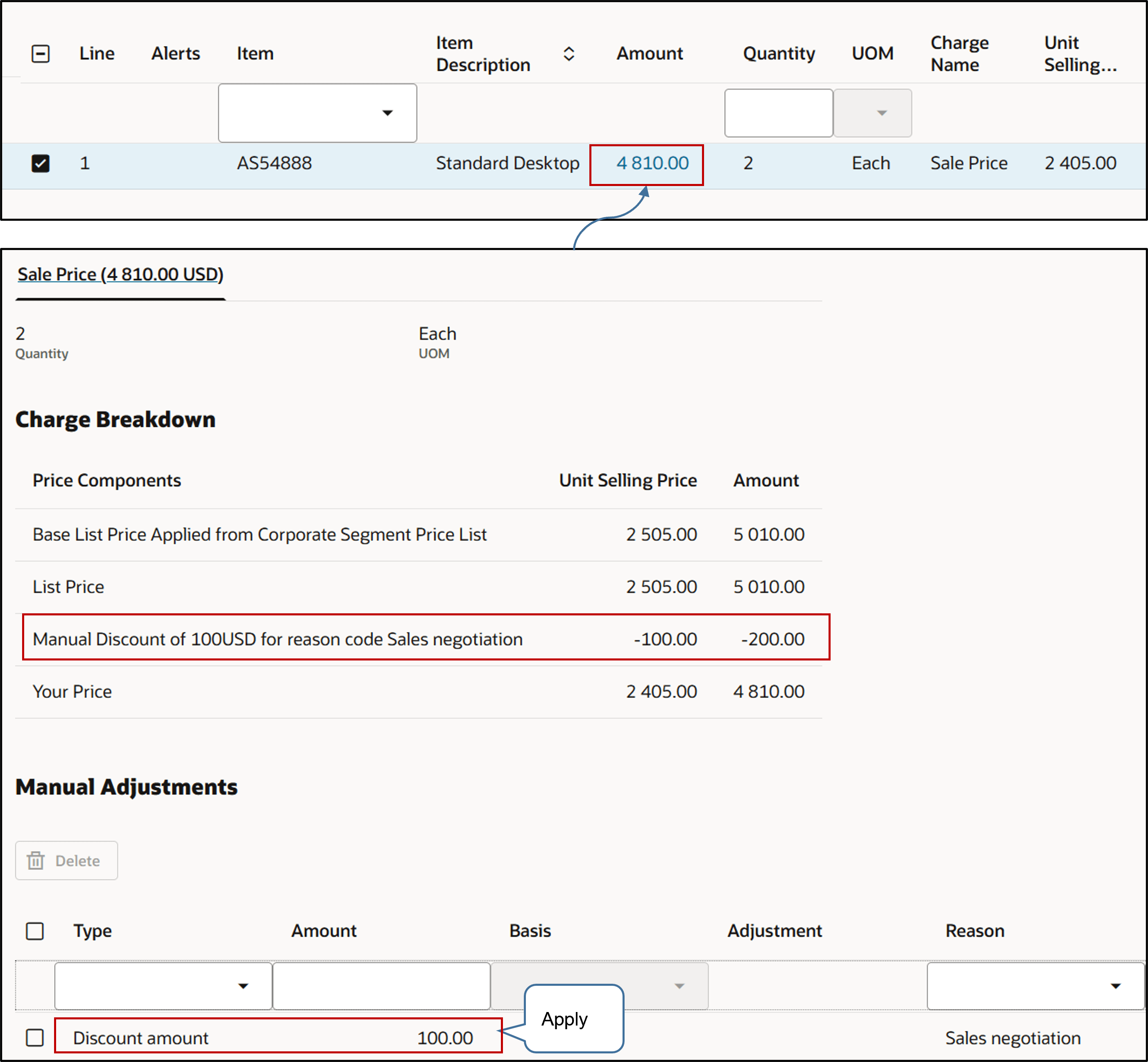
The Amount dialog displays these values:
|
Price Component |
Unit Price |
Amount |
|---|---|---|
|
Base List Price Applied From Corporate Segment Price List |
2,505 |
5,010 |
|
List Price |
2,505 |
5,010 |
|
Manual Discount of 100USD for reason code Sales negotiation |
-100.00 |
-200.00 |
|
Your Price |
2,405.00 |
4,810.00 |
Pricing doesn't calculate shipping and tax until you save or submit the sales order. Click Submit or Save to update the total:
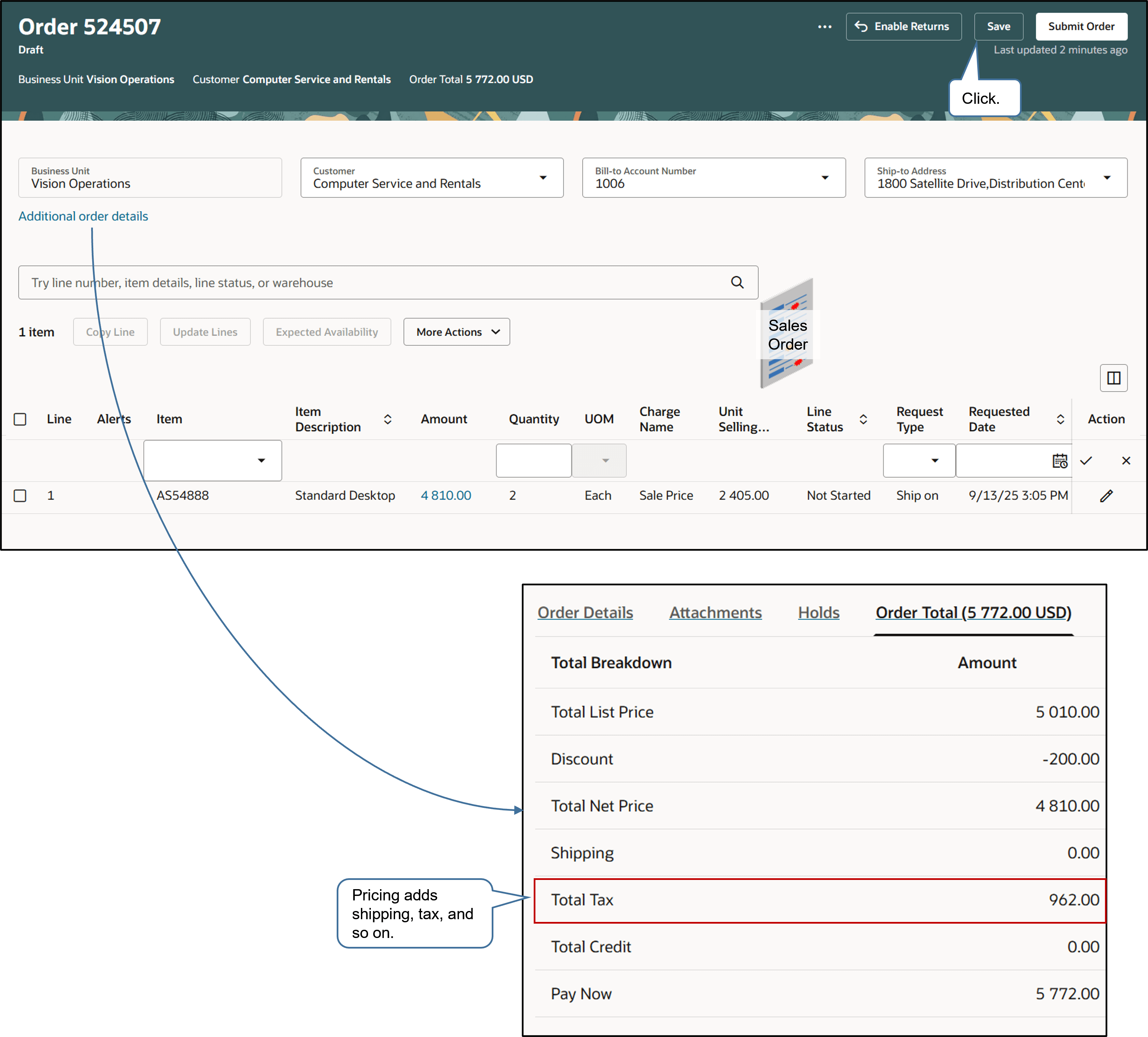
Pricing calculates shipping, tax, and other charges, depending on how you set up pricing. For example, it might add credit, margin, and so on.